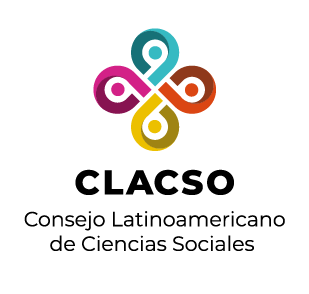Red de Bibliotecas Virtuales de Ciencias Sociales en
América Latina y el Caribe

Por favor, use este identificador para citar o enlazar este ítem:
https://biblioteca-repositorio.clacso.edu.ar/handle/CLACSO/147486| Título : | Centroamérica emboscada. La situación geoestratégica de la región en el siglo XXI. |
| Editorial : | Instituto de Estudios Latinoamericanos |
| Descripción : | Para comprender la política exterior de EE. UU. hacia América Latina, se debe partir de las nociones de “Gran Área”, desarrolladas a inicios del siglo XX por los geopolíticos nazis y estadounidenses, cuyo elemento principal será la noción de “espacio vital” (Lebensraum) y “área de irradiación o influencia” (Ausstrahlung). De ahí que EE. UU., al pretender el control absoluto del continente, no puede permitir la existencia de procesos o elementos que escapen de su control, pues, el continente funciona como plataforma para sus incursiones militares, su enfrentamiento con otras potencias y sus proyecciones globales. Ante un inminente colapso de su hegemonía, EE. UU. buscará el control absoluto de todo el continente, a través de diversos mecanismos, tanto económicos, como políticos y militares. El mayor peso de la política intervencionista estadounidense se ejercerá en la región comprendida entre México, Centroamérica, Colombia y el Caribe, con el objeto de consolidar una “zona tapón” (The Buffer Zone) que controle y reprima a los movimientos sociales de la región y que, además, permita desestabilizar los procesos de unión e independencia que se desarrollan en Suramérica. In order to understand the United States Internationalpolitics towards Latin America, one has tostart from the notions of “The Grand Area”, an ideainitially created at the dawn of the 20th century by UnitedStates and Nazi geopoliticians. Their main elementwill be the notion of the “Vital Space” (Lebensraum) and “Irradiation Area” or “Area of Influence”(Ausstrahlung). Therefore, the UnitedStates, wanting to have absolute controlof the continent, they cannot allow theexistence of elements and processes thatmay escape of their control, since thecontinent works as a platform for theirmilitary incursions, attacks and globalprojections against other powers. Facingan imminent collapse of the hegemony,the United States will search for ways togain absolute control of the entire continentthroughout diverse mechanisms,not only economically speaking butalso political and military. The heaviestpart of the interventionist politics of theUnited States will be fulfilled in the areabetween Mexico, Central America, Colombiaand the Caribbean. This satisfiesthe objective of consolidating a “BufferZone” which controls and represses thesocial movements of the region, and also,allows them to create unstable processesof union and independence which developin South America. |
| URI : | http://biblioteca-repositorio.clacso.edu.ar/handle/CLACSO/147486 |
| Otros identificadores : | https://www.revistas.una.ac.cr/index.php/tdna/article/view/5525 |
| Aparece en las colecciones: | Instituto de Estudios Latinoamericanos - IDELA - Cosecha |
Ficheros en este ítem:
No hay ficheros asociados a este ítem.
Los ítems de DSpace están protegidos por copyright, con todos los derechos reservados, a menos que se indique lo contrario.